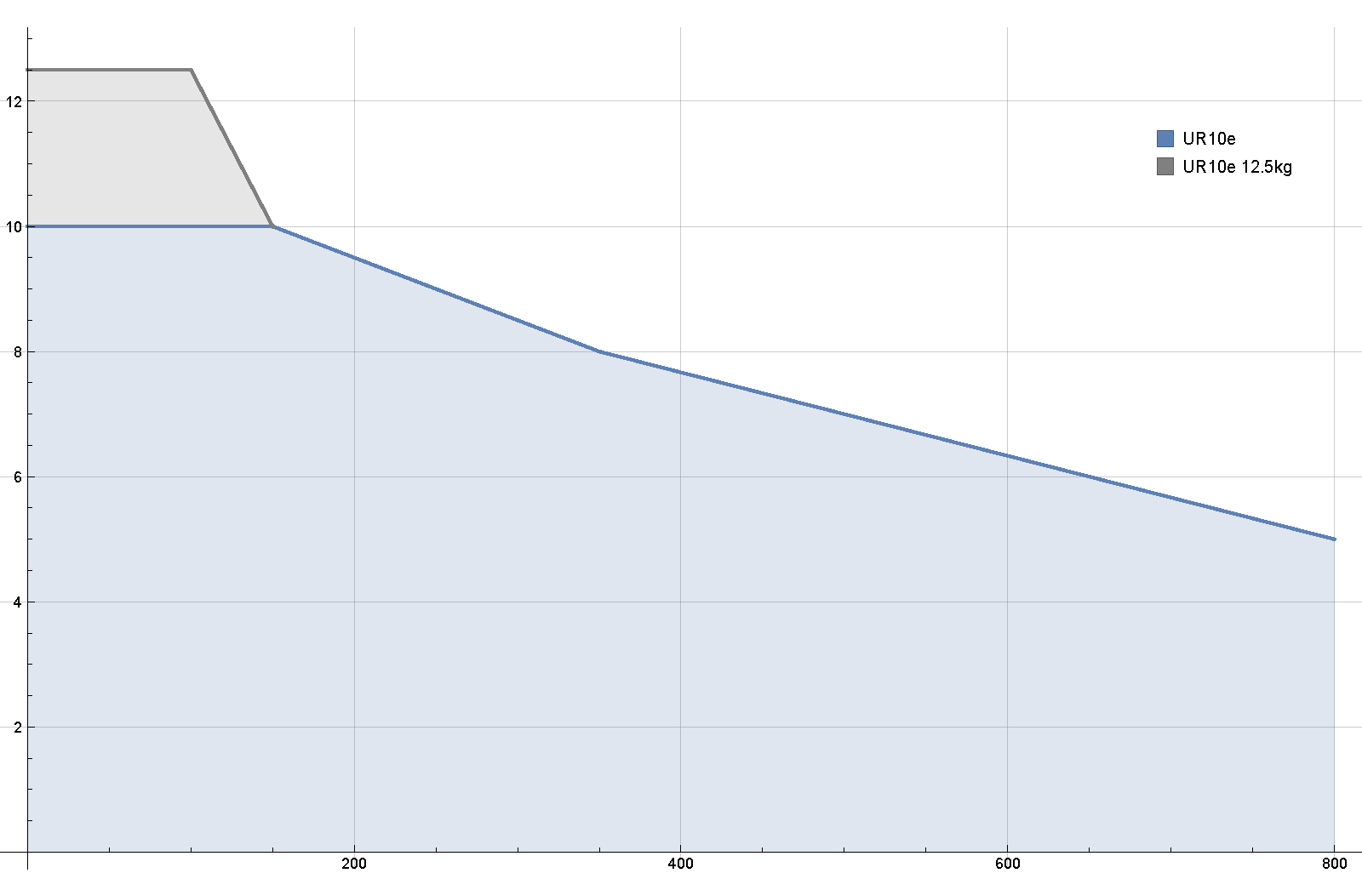Maximum Payload
| Description |
The rated robot arm payload depends on the center of gravity (CoG) offset of the payload, as shown below. The CoG offset is defined as the distance from the center of the tool flange to the center of gravity of the attached payload.
The robot arm can accommodate a long center of gravity offset, if the payload is placed below the tool flange. For example when computing the payload mass in a pick and place application, consider both the gripper and the workpiece.
The robot's capacity to accelerate can be reduced if the payload CoG exceeds the robot's reach and payload. You can verify the reach and payload of your robot in the Technical Specifications.
|
| UR10e 10 kg / 12.5 kg |
You can verify the payload capacity of your robot by checking the label on the robot arm. Increasing the maximum payload capacity can cause the robot to move at reduced speeds and lower acceleration. Movement with high payload is with tool oriented vertically downward, as is often the case in palletizing applications.
|
|
|
The relationship between the rated payload and the center of gravity offset.
|
| Payload inertia |
You can configure payloads with high inertia, if the payload is set correctly. The controller software automatically adjusts accelerations when the following parameters are correclty configured:
You can use the URSim to evaluate the accelerations and cycle times of the robot motions with a specific payload.
|
